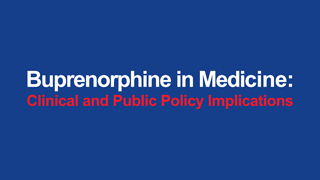Opioids and Down’s syndrome
DOI:
https://doi.org/10.5055/jom.2006.0015Keywords:
opioids, Down’s syndrome, neurotransmission alterations, neurobiological abnormalitiesAbstract
Opioids are used in clinical practice for sedation, anesthesia, and analgesia. Their effects depend on their pharmacokinetic and pharmacodynamic characteristics. The liver is the major site for the biotransformation of most opioids. The major metabolic pathway is oxidation. Metabolism influences distribution, clearance, onset, and offset of opioid drugs. Action also depends on the coupling of opioids with the class of receptors involved and on localization of specific receptors. Three major types of opioid receptors, designated as μ, ẟ, and ϰ, present in the central nervous system, are coupled to G proteins and inhibit adenylyl cyclase. Down’s syndrome is a congenital condition characterized by mental retardation and particular physical features. Neurotransmission alterations are important. Alteration in the concentration of opioids in the cortex of these patients has been demonstrated. Neurobiological abnormalities and, in some, abnormalities in the neurotransmission systems, anxiety, and, in particular, nociception all suggest that structural and functional alterations of opioid receptors may be present. A clear knowledge of these multiple abnormalities is essential for skillful management of the perioperative period and for a good outcome for patients with Down’s syndrome.References
Pjevic M, Kolak R, Komarcevic M: Sedation and analgesia in intensive therapy. Med Pregl. 1998; 51(11-12): 509-517.
Vinik HR: Intravenous anaesthetic drug interactions: Practical applications. Eur J Anaesthesiol. 1995; 12: 13-19.
Lotsch J: Opioid metabolites. J Pain Symptom Manag. 2005; 29(5 Suppl): 10-24.
Singh VK, Bajpai K, Biswas S, et al.: Molecular biology of opioid receptors: Recent advances. Neuroimmunomodulation. 1997; 4(5-6): 285-297.
Cesselin F: Endorphins, opioid receptors and site of action of morphinomimetics. Agressologie. 1991; 32(6-7): 310-317.
Narita M, Funada M, Suzuki T: Regulations of opioid dependence by opioid receptor types. Pharmacol Ther. 2001; 89(1): 1-15.
Childers SR: Opioid receptor-coupled second messenger systems. Life Sci. 1991; 48(21): 1991-2003.
Connor M, Christie MD: Opioid receptor signalling mechanisms. Clin Exp Pharmacol Physiol. 1999; 26(7): 493-499.
Jage J: Opioid tolerance and dependence: Do they matter? Eur J Pain. 2005; 9(2): 157-162.
Shafer SL, Varvel JR: Pharmacokinetics, pharmacodynamics, and rational opioid selection. Anesthesiology. 1991; 74(1): 53-63.
Mastronardi P, Cafiero T: Rational use of opioids. Minerva Anesthesiol. 2001; 67(4): 332-337.
Barry U, Zuo Z: Opioids: Old drugs for potential new applications. Curr Pharm Des. 2005; 11(10): 1343-1350.
Wong C, Burry L, Molino-Carmona S, et al.: Analgesic and sedative pharmacology in the intensive care unit. Dynamics. 2004; 15(1): 23-26.
Glass PS: Remifentanil: A new opioid. J Clin Anesth. 1995; 7(7): 558-563.
Scholz J, Steinfath M, Schulz M: Clinical pharmacokinetics of alfentanil, fentanyl and sufentanil. An update. Clin Pharmacokinet. 1996; 31(4): 275-292.
Lang E, Kapila A, Shlugman D, et al.: Reduction of isoflurane minimal alveolar concentration by remifentanil. Anesthesiology. 1996; 85(4): 721-728.
Matsuki A: A review of recent advances in total intravenous anesthesia. Masui. 1991; 40(5): 684-691.
Hanks GW, Reid C: Contribution to variability in response to opioids. Support Care Cancer. 2005; 13(3): 145-152.
Inturrisi CE: Clinical pharmacology of opioids for pain. Clin J Pain. 2002; 18(4 Suppl): S3-S13.
Coluzzi F, Mattia C: Oxycodone. Pharmacological profile and clinical data in chronic pain management. Minerva Anesthesiol. 2005; 71(7-8): 451-460.
Anderson VC, Cooke B, Burchel KJ: Intrathecal hydromorphone for chronic non-malignant pain: A retrospective study. Pain Med. 2001; 2(4): 287-297.
White PF: Management of postoperative pain and emesis. Can J Anaesth. 1995; 42(11): 1053-1055.
Strassels SA, McNicol E, Suleman R: Postoperative pain management: A practical review, part 2. Am J Health Syst Pharm. 2005; 62(19): 2019-2025.
Jimenez M, Catala E, Casas JI, et al.: Analgesia of postoperative pain in ambulatory surgery. Rev Esp Anestesiol Reanim. 1995; 42(4): 125-131.
Lubec G, Engidawork E: The brain in Down syndrome (trisomy 21). J Neurol. 2002; 249(10): 1347-1356.
Dutta S, Nandagopal K, Gangopadhyay PK, et al.: Molecular aspects of Down syndrome. Indian Pediatr. 2005; 42(4): 339-344.
Galdzicki Z, Siarey RJ: Understanding mental retardation in Down’s syndrome using trisomy 16 mouse models. Genes Brain Behav. 2003; 2(3): 167-178.
Martinez-Cue C, Baamonde C, Lumbreras MA, et al.: A murine model for Down syndrome shows reduced responsiveness to pain. Neuroreport. 1999; 10(5): 1119-1122.
Cetrullo N, Cocchi S, Guadagni MG, et al.: Pain and anxiety control in Down syndrome. Minerva Stomatol. 2004; 53(11-12): 619-629.
Zwakhalen SM, van Dongen KA, Hamers JP, et al.: Pain assessment in intellectually disabled people: Non-verbal indicators. J Adv Nurs. 2004; 45(3): 236-245.
Pharmacy Benefit Management Omnicare Healthline: Management of chronic conditions in individuals with mental retardation and developmental disabilities: Pain Management. Available at http://www.pbmplus.com/docs/september2005 ocrhealthline.doc. Accessed December 15, 2005.
Tsui BC, Entwistle L: Thoracic epidural analgesia via the lumbar approach using nerve stimulation in a pediatric patient with Down syndrome. Acta Anaesthesiol Scand. 2005; 49(5): 712-714.
Tobias JD, Berkenbosch JW: Tolerance during sedation in a pediatric ICU patient: Effects on the BIS monitor. J Clin Anesth. 2001; 13(2): 122-124.
Meitzner MC, Skurnowicz JA: Anesthetic considerations for patients with Down syndrome. AANA J. 2005; 73(2): 103-107.
Riley DP, McBride LJ: Ketamine, midazolam and vecuronium infusion. Anaesthesia for Down’s syndrome and congenital heart disease. Anaesthesia. 1991; 46(2): 122-123.
Gakhal B, Scott CS, MacNab AJ: Comparison of morphine requirements for sedation in Down’s syndrome and non-Down’s patients following paediatric cardiac surgery. Paediatr Anaesth. 1998; 8(3): 229-233.
Tweed WA, Dakin D: Explosive coughing after bolus fentanyl injection. Anesth Analg. 2001; 92(6): 1442-1443.
Sandman CA, Barron JL, Colman H: An orally administered opiate blocker, naltrexone, attenuates self-injurious behavior. Am J Ment Retard. 1990; 95(1): 93-102.
Kars H, Broekema W, Glaudemans-van Gelderen I, et al.: Naltrexone attenuates self-injurios behaviour in mentally retarded subjects. Biol Psychiatry. 1990; 27(7): 741-746.
Soto-Raices O: Successful high dose of naltrexone on pediatric self-injury. Rev Psiquiatr Rio Gd Sul. 2004; 26(2): 219-220.
Risser D, You ZB, Cairns N, et al.: Endogenous opioids in frontal cortex of patients with Down syndrome. Neurosci Lett. 1996; 203(2): 111-114.
Olson LE, Richtsmeier JT, Leszl J, et al.: A chromosome 21 critical region does not cause specific Down syndrome phenotypes. Science. 2004; 306(5696): 687-690.
Arbuzova S, Hutchin T, Cuckle H: Mitochondrial dysfunction and Down’s syndrome. Bioessays. 2002; 24(8): 681-684.
Teksen F, Sayli BS, Aydin A, et al.: Antioxidative metabolism in Down syndrome. Biol Trace Elem Res. 1998; 63(2): 123-127.
Gerli G, Zenoni L, Locatelli GF, et al.: Erythrocyte antioxidant system in Down syndrome. Am J Med Genet Suppl. 1990; 7: 272-273.
Elson A, Levanon D, Weiss Y, et al.: Overexpression of livertype phosphofructokinase (PFKL) in transgenic-PFKL mice: Implication for gene dosage in trisomy 21. Biochem J. 1994; 299(2): 409-415.
Miyauchi J, Ito Y, Kawano T, et al.: Unusual diffuse liver fibrosis accompanying transient myeloproliferative disorder in Down’s syndrome: A report of four autopsy cases and proposal of a hypothesis. Blood. 1992; 80(6): 1521-1527.
Schwab M, Niemeyer C, Schwarzer U: Down syndrome, transient myeloproliferative disorder, and infantile liver fibrosis. Med Pediatr Oncol. 1998; 31(3): 159-165.
Lo A, Brown HG, Fivush BA, et al.: Renal disease in Down syndrome: Autopsy study with emphasis on glomerular lesions. Am J Kidney Dis. 1998; 31(2): 329-335.
Malaga S, Pardo R, Malaga I, et al.: Renal involvement in Down syndrome. Pediatr Nephrol. 2005; 20(5): 614-617.
Durst P, Palazzolo J, Peyrelong JP, et al.: Methadone and sleep apnea syndrome. Can J Psychiatry. 2005; 50(3): 153-158.
Boushra NN: Anaesthetic management of patients with sleep apnoea syndrome. Can J Anaesth. 1996; 43(6): 599-616.
Connolly LA: Anesthetic management of obstructive sleep apnea patients. J Clin Anesth. 1991; 3(6): 461-469.
Dahlqvist A, Rask E, Rosenqvist CJ, et al.: Sleep apnea and Down’s syndrome. Acta Otolaryngol. 2003; 123(9): 1094-1097.
Mitchell RB, Call E, Kelly J: Diagnosis and therapy for airway obstruction in children with Down syndrome. Arch.Otolaryngol Head Neck Surg. 2003; 129(6): 642-645.
Resta O, Barbaro MP, Giliberti T, et al.: Sleep related breathing disorders in adults with Down syndrome. Downs Syndr Res Pract. 2003; 8(3): 115-119.
Downloads
Published
How to Cite
Issue
Section
License
Copyright 2005-2024, Weston Medical Publishing, LLC
All Rights Reserved












